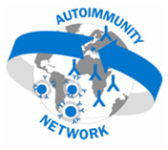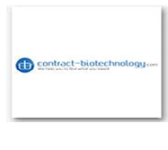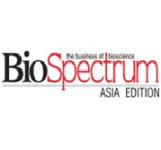International Conference on Innate Immunity (Innate Immunity-2015) is scheduled from July 20-21, 2015 in Barcelona, Spain which aims to gather the most elegant societies and industries along with the renowned and honorable persons form top universities across the globe. Innate Immunity is a subsystem of the overall immune system that comprises the cells and mechanisms that defend the host from infection by other organisms. This means that the cells of the innate system recognize and respond to pathogens in a generic way, but, unlike the adaptive immune system it does not confer long-lasting or protective immunity to the host. OMICS International Conference is a great platform in Barcelona for researchers to explore knowledge and get new ideas.
OMICS International through its Open Access Initiative is committed to make genuine and reliable contributions to the scientific community. OMICS International hosts over 400 leading-edge peer reviewed Open Access journals and has organized over 300 scientific conferences all over the world. OMICS International journals have over 3 million readers and the fame and success of the same can be attributed to the strong editorial board which contains over 30000 eminent personalities and the rapid, quality and quick review processing. OMICS Conference is a great platform for the researchers to get the knowledge to contribute towards future research. Target Audience for Innate Immunity-2015 includes Researchers, Industrialists, Students and Public Sector Experts.
Barcelona is the capital city of the autonomous community of Catalonia in Spain and the country’s 2nd largest city, with a population of 1.6 million within its administrative limits Public Health research area focused on gathering information to improve the effectiveness of disease prevention strategies. In 2011, our research ranged from determining the predominant circulating strains of influenza virus, to assessing the role of vaccine-preventable infections on the health of children in Morocco, to evaluating the effectiveness of a strategy to prevent yaws. The results of CRESIB’s public health research are expected to guide development of new prevention strategies and to strengthen the application of strategies shown to be effective. For more
For more details on the relevant conferences, please click here
Inflammation
Inflammation is a biological response to harmful stimuli, such as pathogens, damaged cells or irradiation. It is a protective attempt by the organism to remove injurious stimuli and to initiate the healing process. It is characterized by pain, redness, heat, swelling and disturbance of function. In order to avoid immunopathology, this system is tightly regulated by a number of endogenous molecules that limit the magnitude and duration of the inflammatory response.
The Major signs of acute inflammation include pain, heat, redness, swelling, and loss of function. Inflammation is a generic response, considered as a mechanism of innate immunity, as compared to adaptive immunity, which is specific for each pathogen.
Too little inflammation could lead to progressive tissue destruction by the harmful stimulus (e.g. bacteria) and compromise the survival of the organism. In contrast, chronic inflammation may lead to a host of diseases, such as hay fever, periodontitis, atherosclerosis, rheumatoid arthritis, and even cancer (cancer Immunology). Inflammation is therefore normally closely regulated by the body.
Innate Immunity : An Overview
The innate immune system, also known as the nonspecific immune system is an important part of the overall immune system that comprises the cells and mechanisms that defend the host from infection by other organisms. The innate immune system will act as the first line of defense against the invading microbial pathogens and relies on a large family of pattern recognition. contrary to the adaptive immune system (which is found only in vertebrates), it does not confer long-lasting or protective immunity to the host. Innate immune systems provides immediate defense against the infection, and are found in all classes of living organisms including plant and animal life. They include both humoral immunity components and cell-mediated immunity components.
The innate immune system has evolved to recognize either microbial components that are essential for the viability and virulence of microbes and are thus less prone to modifications or common biologic. Although innate immunity is critical for host defense against infectious challenges, the innate immune system is emerging as a critical regulator of human inflammatory disease.
For more sessions, please click here
Track 6:Plant Innate Immunity
Innate immunity is the first line of defence against invading microorganisms in vertebrates and the only line of defence in invertebrates and plants. Plants are invaded by an array of pathogens of which only a few succeed in causing disease. The attack by others is countered by a sophisticated immune system possessed by the plants. The plant immune system is broadly divided into two. microbial-associated molecular-patterns-triggered immunity (MTI) and effector-triggered immunity (ETI). MTI confers basal resistance, while ETI confers durable resistance, often resulting in hypersensitive response. Plants also possess systemic acquired resistance (SAR), which provides long-term defense against a broad-spectrum of pathogens. Salicylic-acid-mediated systemic acquired immunity provokes the defense response throughout the plant system during pathogen infection at a particular site. Trans-generational immune priming allows the plant to heritably shield their progeny towards pathogens previously encountered. Plants circumvent the viral infection through RNA interference phenomena by utilizing small RNAs.
Barcelona is the capital city of the autonomous community of Catalonia in Spain and the country’s 2nd largest city, with a population of 1.6 million within its administrative limits Public Health research area focused on gathering information to improve the effectiveness of disease prevention strategies. In 2011, our research ranged from determining the predominant circulating strains of influenza virus, to assessing the role of vaccine-preventable infections on the health of children in Morocco, to evaluating the effectiveness of a strategy to prevent yaws. The results of CRESIB’s public health research are expected to guide development of new prevention strategies and to strengthen the application of strategies shown to be effective.
The need to strengthen immunity is tightly linked with other health conditions. Compared to just 3 percent of the total U.S. adult population, those currently managing stress, sleep and energy issues are much more likely to be treating a compromised immune system at the same time. As such, an expanded market exists for manufacturers of foods, beverages and nutritional supplements claiming to strengthen immunity. Of course, the ultimate determinant of success for combination formulas treating immune weakness and other conditions is how well they work.Consumers have various means by which they can proactively strengthen their immune system, the most common being condition-specific or targeted nutrient supplements and functional foods/beverages. About one-fourth of the U.S. general population—regardless of age, gender, marital status or income—is more likely to purchase a food or beverage if it claims to boost immunity. A similar proportion is interested in nutritional supplements that serve the same purpose, but in this case, the Boomer generation (particularly those ages 50 to 64) is the most captive audience. While Boomers represent a core market for immune-support supplements, they are relatively dissatisfied, compared to their younger counterparts, with the efficacy of the options currently available to them
For more information on market analysis, visit: http://innateimmunity.conferenceseries.com/





